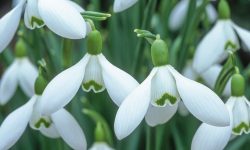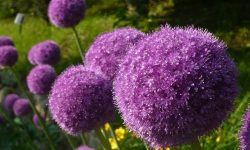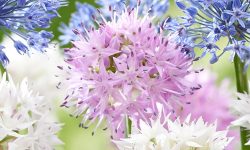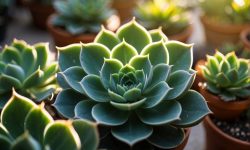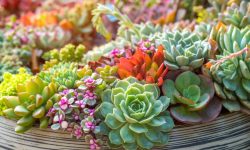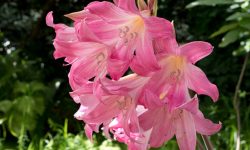Few sights rival the beauty of a lavender field in full bloom—the soft waves of purple swaying in the breeze, the air rich with calming fragrance. For many gardeners and nature lovers, witnessing this moment feels like stepping into a dreamscape of serenity and scent. Lavender doesn’t just decorate your garden—it evokes peace, invites pollinators, and adds timeless charm to any landscape.
But knowing exactly when lavender blooms is key to enjoying its full splendor. Whether you’re growing English lavender in a cool climate or Spanish varieties under the sun, timing makes all the difference. In this guide, you’ll discover how bloom times vary by type, region, and care, so you can plan your garden for maximum beauty and fragrance.
Understanding Lavender’s Blooming Cycle
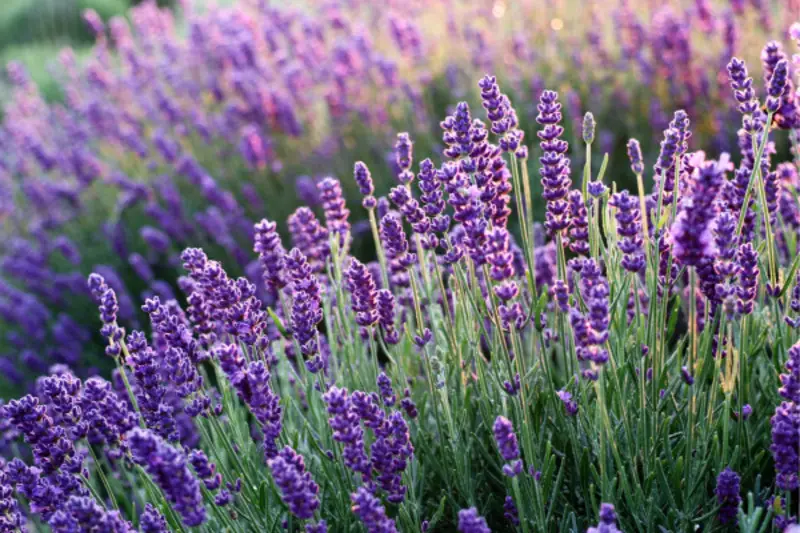
Lavender is cherished not only for its fragrant purple flowers but also for its long and consistent blooming period, depending on the type and growing conditions. To understand when lavender blooms, it’s important to begin with the natural rhythm of the plant’s growth cycle. Most lavenders are perennials, meaning they go through repeated annual cycles of growth, blooming, and dormancy. In the early stages of spring, lavender begins sending out new green shoots. As temperatures rise and days grow longer, flower spikes form, gradually opening into vibrant blossoms.
The blooming phase is directly tied to the surrounding environment, particularly the amount of sunlight and warmth the plant receives. Lavender thrives under full sun and in well-drained soils, which accelerate its blooming period. Typically, the first flush of flowers appears between late spring and mid-summer, although this timing can vary with variety and region. Gardeners who understand this cycle can better plan planting and pruning schedules for optimal floral displays.
Bloom Timing by Lavender Variety
Different types of lavender bloom at slightly different times, and recognizing their unique flowering schedules helps in extending the bloom season or coordinating garden design. English lavender, one of the most common varieties, usually starts flowering from late spring to early summer. Its blooms may last several weeks, especially if deadheaded properly.
French and Spanish lavenders, by contrast, often bloom earlier in the season—sometimes as early as mid-spring—and can continue flowering sporadically through summer and even into early fall in milder climates. These types are more tolerant of heat and humidity, allowing for longer flowering windows.
Lavandin, a hybrid variety known for its robust scent and larger flower spikes, tends to bloom slightly later than English lavender, with peak flowering often occurring in mid to late summer. Understanding these variations allows gardeners to plan for continuous blooms by mixing varieties with staggered bloom times.
Regional Bloom Patterns Across the United States
Lavender bloom timing also varies significantly depending on the region. In warmer southern states like Texas or southern California, the bloom season may begin as early as March or April, with additional flushes possible into the fall months. In contrast, gardeners in cooler northern climates may not see blooms until June, with a shorter blooming window that typically ends in July or August.
The Pacific Northwest presents another unique case. The mild, wet winters followed by relatively cool, dry summers provide ideal conditions for prolonged blooming from late spring through mid-summer. In drier inland regions with shorter seasons, bloom times can be condensed but often very intense, with a burst of color during early summer.
In high-elevation or mountainous areas, lavender generally blooms later, often beginning in July and lasting into August, depending on the year. Understanding your USDA hardiness zone and average frost dates can help you better predict bloom timing and care needs.
Climate and Its Influence on Flowering
Climate plays a defining role in how and when lavender blooms. This perennial herb loves warmth, sun, and low humidity. In cooler climates, flower development may be slower, and in extreme cold, lavender may even fail to bloom if it suffers winter dieback. Excess moisture in spring or early summer can also cause delayed flowering or poor bud development due to root rot or fungal issues.
In dry, Mediterranean-type climates—lavender’s native habitat—the plant performs at its best. Long, sunny days and warm nights promote steady blooming, while low rainfall minimizes the risk of disease. In contrast, humid climates can shorten the bloom period and require increased vigilance against mold and mildew.
Temperature fluctuations also influence blooming. Unseasonably cold weather during bud formation may delay flowering, while extreme heat can cause blooms to fade more quickly. Microclimates within your garden, such as walls that reflect heat or shade from trees, can alter bloom timing even within a single yard.
Soil and Nutrient Management for Consistent Blooms
While lavender prefers lean, slightly alkaline soil, nutrient availability still plays a role in bloom development. Over-fertilizing, particularly with nitrogen-rich fertilizers, encourages lush foliage at the expense of flowers. For maximum blooms, the soil should be well-drained and low to moderate in fertility.
Adding lime to increase soil alkalinity can enhance lavender’s ability to absorb nutrients critical for blooming. In regions with acidic soils, failing to adjust pH may result in weaker flowering and shorter blooming cycles. Compost and organic matter improve soil texture and drainage but should be used in moderation.
A proper soil environment allows lavender to establish strong root systems, which are essential for vigorous growth and reliable flowering. Soil testing is an excellent practice before planting to ensure the proper balance of nutrients and pH.
Pruning for Extended Flowering and Health
Strategic pruning is one of the most effective ways to enhance lavender’s bloom potential. Pruning encourages new growth, maintains the plant’s shape, and prevents it from becoming woody at the base. The best time to prune is immediately after the first bloom, which often leads to a second flush later in the season.
Hard pruning in late summer or early fall allows the plant to regenerate before dormancy, setting the stage for an even more impressive display the following year. However, pruning too late—particularly in cold regions—may leave the plant vulnerable to winter damage. Gardeners should aim to prune when there is still time for new growth to harden off before the first frost.
Consistent annual pruning also prevents the interior from becoming shaded and air-restricted, which can negatively affect flower production. Younger plants respond especially well to pruning, establishing a habit of dense flowering as they mature.
Watering Practices That Affect Blooming
Water plays a vital role in lavender’s growth, but too much of it can hinder blooming or even kill the plant. Lavender prefers to be kept on the dry side, with infrequent but deep watering once established. Overwatering causes root rot, which reduces the plant’s vigor and ability to flower.
During the early growing season, it’s essential to allow the topsoil to dry out between waterings. Once buds begin forming, consistent moisture—without saturation—is key to encouraging full and healthy blooms. In containers, where water drains more quickly, monitoring is even more critical to prevent both drought stress and root rot.
Proper irrigation can be the difference between a lush, blooming lavender bush and one that remains green but flowerless. Drip irrigation systems or soaker hoses work well in garden beds, minimizing water on the foliage and reducing the risk of fungal issues.
How to Extend the Blooming Season
Gardeners can prolong lavender’s blooming period through careful care and timing. Deadheading, or removing spent blooms, is one of the simplest ways to stimulate new flower production. This prevents the plant from putting energy into seed formation and redirects it toward producing new spikes.
In warmer climates, a second and even third round of blooming may occur if deadheading is combined with light pruning and regular care. Applying a balanced, slow-release fertilizer in mid-season can also help support continued flowering, provided it does not contain excess nitrogen.
Choosing a mix of early-, mid-, and late-blooming varieties allows for a staggered display across the summer months. With this approach, gardeners can enjoy continuous color and fragrance from spring through early fall.
Lavender Blooming Indoors and in Greenhouses
Although traditionally grown outdoors, lavender can also bloom indoors or in greenhouses under controlled conditions. When grown indoors, lavender requires intense sunlight—preferably six to eight hours of direct light daily—or supplemental grow lights to initiate blooming.
In greenhouses, the ability to regulate temperature and humidity allows for bloom control throughout the year. However, blooming indoors may be less profuse than in open soil due to limited root space and reduced airflow. Container-grown lavender should be rotated regularly to ensure even light exposure and trimmed back lightly to encourage bushiness.
Indoor growers must mimic seasonal changes with light and temperature to prompt the plant into its blooming cycle. Without sufficient cues, lavender may remain in a vegetative state without producing flowers.
Common Blooming Problems and Their Causes
When lavender fails to bloom or produces only a few flowers, the cause is often environmental or cultural. Overwatering, as mentioned earlier, is a frequent culprit. Similarly, too much shade can prevent bud formation entirely. Lavender needs at least six hours of full sun daily to flower well.
Another common issue is excessive nitrogen from fertilizers. While nitrogen supports foliage, it suppresses blooms. In contrast, potassium helps trigger flowering and should be part of any balanced fertilization plan.
Poor soil drainage can suffocate the roots and prevent the uptake of bloom-producing nutrients. In alkaline-deficient soil, a lack of calcium or magnesium may also impair flower development. Diagnosing the underlying cause early ensures that future seasons are not impacted by the same issue.
Harvesting Lavender at Peak Bloom
Timing the harvest correctly ensures maximum fragrance and essential oil concentration in the flowers. The best time to harvest lavender is when the first few florets on each spike have opened, but most are still in bud form. At this stage, the oils are at their highest, making it ideal for both fresh use and drying.
Cutting lavender in the morning, after dew has evaporated but before the heat of the day sets in, preserves both color and scent. Harvesting regularly also encourages new blooms, especially in varieties that flower multiple times a season. The entire stem should be taken just above the woody growth to encourage bushier growth.
After harvesting, lavender can be bundled and dried in a cool, dark, and well-ventilated area to retain its quality. Dried lavender remains fragrant for months and is commonly used in sachets, culinary recipes, and essential oils.
The Role of Pollinators During Blooming
Lavender blooms attract a wide range of pollinators, especially bees and butterflies, which are crucial for biodiversity and garden health. When lavender is in full bloom, its flowers serve as a vital nectar source, supporting local ecosystems while increasing the visual appeal of the garden.
Maintaining strong, healthy blooms is beneficial not only for aesthetics but also for supporting pollinator populations. Gardeners can plant additional pollinator-friendly companions nearby, such as thyme or echinacea, to draw even more beneficial insects.
Encouraging pollinators through sustainable practices—such as avoiding pesticides during bloom—helps improve the long-term health of the garden and increases the chances of natural reseeding in self-propagating varieties.
Frequently Asked Questions
When does lavender usually start blooming?
Lavender typically begins blooming in late spring to early summer, depending on the variety and region. English lavender may start in late May or early June, while French and Spanish types may bloom earlier in warmer climates. Peak flowering can vary with altitude, weather conditions, and pruning practices.
How long does the lavender blooming season last?
The blooming season can last between 4 to 8 weeks, with some varieties offering a second flush later in the season. With proper care and deadheading, gardeners can extend blooming into mid or even late summer, especially in mild climates where growth continues into fall.
Can I encourage more blooms from my lavender plants?
Yes, you can promote more blooms by pruning at the right time, ensuring full sun exposure, avoiding overwatering, and not over-fertilizing. Regular deadheading—removing spent flowers—helps stimulate new blooms and keeps the plant tidy.
Does lavender bloom more than once a year?
Some varieties, such as Lavandula angustifolia ‘Hidcote’ or ‘Munstead’, may have a light second flush of blooms in late summer if the first wave is pruned correctly. However, not all varieties will re-bloom, especially in cooler or shorter-season climates.
What climate is best for blooming lavender?
Lavender thrives in Mediterranean-like climates with hot, dry summers and mild winters. Well-drained soil, low humidity, and full sun are essential. Gardeners in USDA Zones 5 to 9 can grow lavender successfully, though bloom timing will differ slightly based on zone.
Does container-grown lavender bloom at the same time as garden lavender?
Container-grown lavender can bloom slightly earlier due to warmer root zones, especially if placed on sunlit patios or decks. However, timing still depends on variety and care. Ensure proper drainage and sunlight to align container blooms with in-ground counterparts.
What should I do if my lavender doesn’t bloom?
If your lavender isn’t blooming, check for issues like too much shade, nutrient-rich or overly wet soil, or improper pruning. Older, woody plants may also bloom less. Consider rejuvenation pruning or replanting if the plant is past its productive years.
Conclusion
Understanding when lavender blooms is more than just a calendar check—it’s a rhythm that brings together climate, variety, and care. From the first signs of color in early summer to the final fragrant waves in late August, lavender’s bloom period can transform gardens, pathways, and containers into fields of sensory beauty. Whether you grow English lavender in a temperate zone or tend to heat-loving French types in the South, timing your care practices with the natural blooming cycle ensures a long, rewarding floral display. Let your lavender flourish by working in harmony with its seasonal patterns, and enjoy the timeless scent and charm of one of nature’s most beloved flowers.

